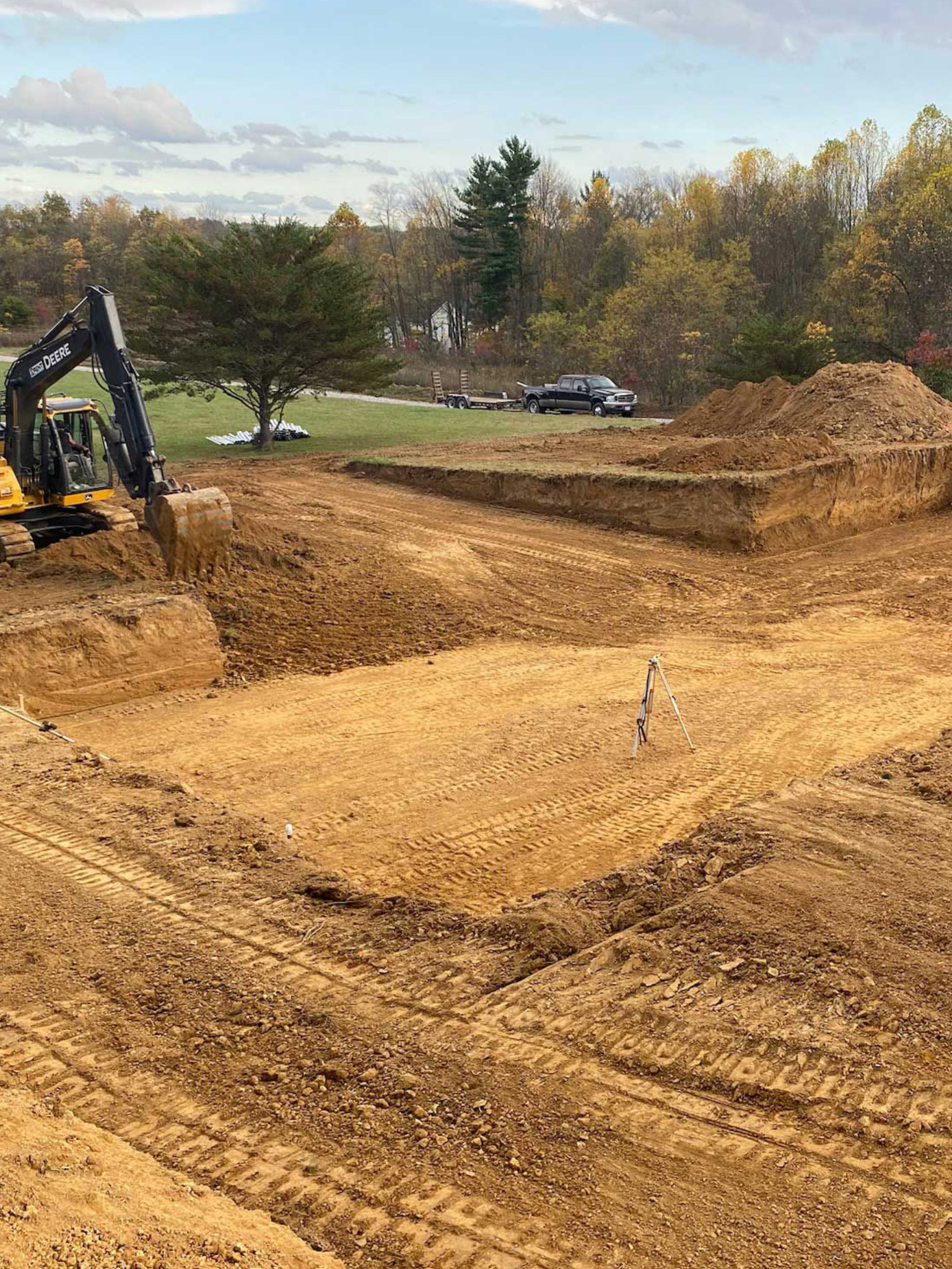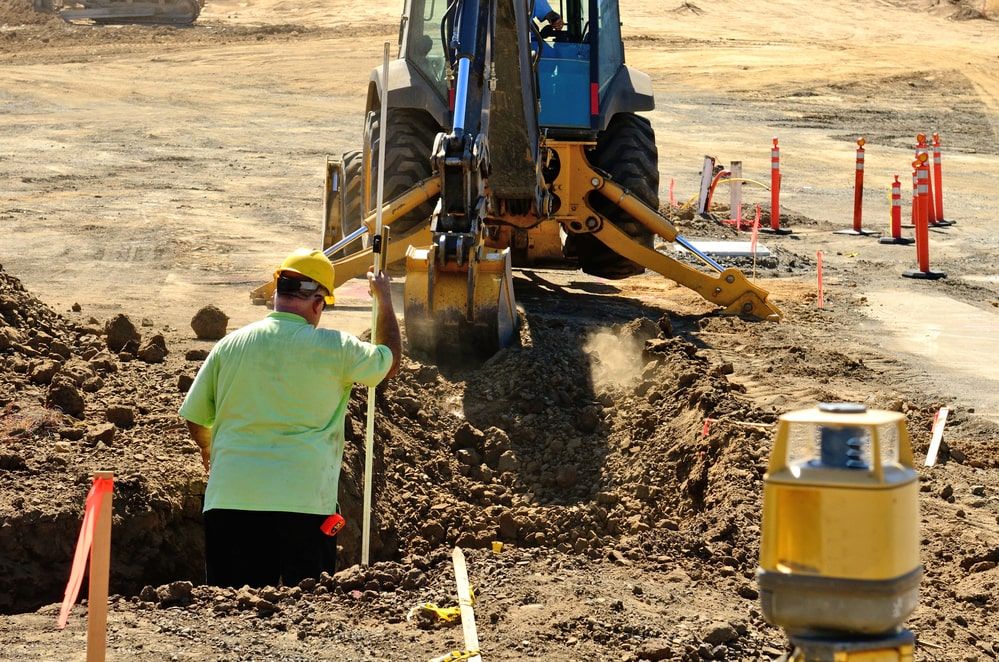Specialist Septic Ohio - Trusted Septic System Specialists in Ohio
Specialist Septic Ohio - Trusted Septic System Specialists in Ohio
Blog Article
Comprehensive Excavation Strategies: Understanding the Basics for Success
In the world of building and construction and civil design, the value of efficient excavation techniques can not be overemphasized. The mindful preparation, specific implementation, and careful focus to information needed in excavation tasks demand a comprehensive strategy that encompasses different essential aspects. From preliminary soil analysis to the application of precaution and normal development tracking, grasping these core aspects is vital for accomplishing success in any excavation undertaking. The true mastery lies not simply in understanding these fundamentals yet in flawlessly incorporating them to browse the intricacies of excavation projects with finesse.
Comprehending Excavation Project Planning

Successful excavation tasks are improved the structure of complete and thorough planning. The initial stage of any excavation job is the drawing board, where crucial decisions are made that can considerably influence the end result of the job. During this stage, it is crucial to collect all relevant info regarding the website, including topographical surveys, dirt structure, and any type of potential hazards that might exist. Comprehending the project budget, timeline, and range restrictions is important for developing a detailed excavation strategy that makes certain the task's success.
One trick element of excavation project planning is the development of a comprehensive timeline that details the sequence of turning points, target dates, and tasks. This timeline offers as a roadmap for the project group, enabling them to track progression and make needed adjustments to make sure the task remains on routine. Additionally, a distinct spending plan that represents all expenditures, consisting of equipment rental, labor prices, and materials, is important for avoiding expense overruns and delays. By meticulously considering all these variables during the drawing board, excavation jobs can be implemented successfully and effectively, resulting in effective outcomes.
Soil Evaluation and Website Assessment
Performing thorough dirt analysis and site evaluation is a vital step in the prep work stage of any kind of excavation job. Dirt analysis includes establishing the composition, framework, and buildings of the dirt at the excavation website. This info is critical for understanding the soil's bearing capacity, wetness material, and capacity for erosion, which are key consider determining the excavation methods and devices required for the job.
Website examination goes beyond dirt evaluation and includes a more comprehensive analysis of the general site problems. This assessment consists of recognizing any prospective risks, such as underground utilities, environmental concerns, or unpredictable terrain, that could impact the excavation process. By thoroughly examining the website, project managers can create efficient excavation methods that prioritize safety and security, performance, and environmental management.
Using sophisticated technologies like ground-penetrating radar, soil sampling, and drone studies can boost the accuracy and performance of soil evaluation and website assessment. Spending time and sources in these initial actions can ultimately save time and protect against expensive delays or complications throughout the excavation procedure.
Devices Selection and Application
Efficient excavation projects count greatly on critical tools option and application to make sure ideal efficiency and performance. Picking the best equipment for the task is vital in making the most of effectiveness and reducing downtime. Factors such as the type of dirt, deepness of excavation, and task extent play a considerable duty in identifying the most suitable devices for the weblink job available.

Along with this content picking the appropriate equipment, appropriate usage is key to task success. Operators should be educated to manage the equipment safely and effectively - lancaster trenching. Normal maintenance checks and timely repairs aid stop failures and make sure constant efficiency throughout the project
Security Measures and Laws Conformity
In the world of excavation projects, prioritizing precaution and conformity with laws is vital to making certain a safe and secure and legally sound operational setting. Precaution include a variety of methods, including performing thorough website assessments, carrying out correct signage and obstacles, and providing ample safety training for all personnel associated with the excavation process. Adherence to guidelines, such as OSHA requirements in the USA, guarantees that the excavation task satisfies the essential requirements to secure employees, onlookers, and the surrounding setting.

Monitoring Progression and Adjusting Strategies
Just how can predict managers efficiently track the development of excavation jobs and adjust their strategies as necessary to optimize end results? Tracking development is vital for making sure that excavation projects stay on track and satisfy deadlines. Task supervisors can utilize numerous tools and strategies to track progress, such as day-to-day report card, routine website evaluations, and progressed surveillance modern technologies like drones and GPS tracking systems. By constantly checking the project's innovation, managers can recognize any potential hold-ups or problems early and take proactive actions to resolve them.

Conclusion
In verdict, understanding the basics of extensive excavation methods is important for the success of any type of task. By comprehending job preparation, analyzing dirt and website problems, selecting appropriate devices, adhering to safety regulations, and checking progress, job managers can ensure a effective and smooth excavation procedure. Applying these techniques will bring about successful results and decrease possible risks or setbacks throughout the excavation project.
The initial stage of any type of excavation job is the planning stage, where important decisions are made that can considerably impact the end result of the job. Comprehending the job timeline, range, and spending plan restrictions is crucial for developing a comprehensive excavation strategy that ensures the project's success.
How can predict managers successfully track the advancement of excavation projects and adjust their strategies appropriately to enhance results? By closely checking development and being eager to adapt strategies, job supervisors can boost the overall success of excavation projects.
By understanding job preparation, examining soil and site conditions, choosing proper devices, abiding with security policies, and monitoring progression, job managers can guarantee a efficient and smooth excavation process.
Report this page